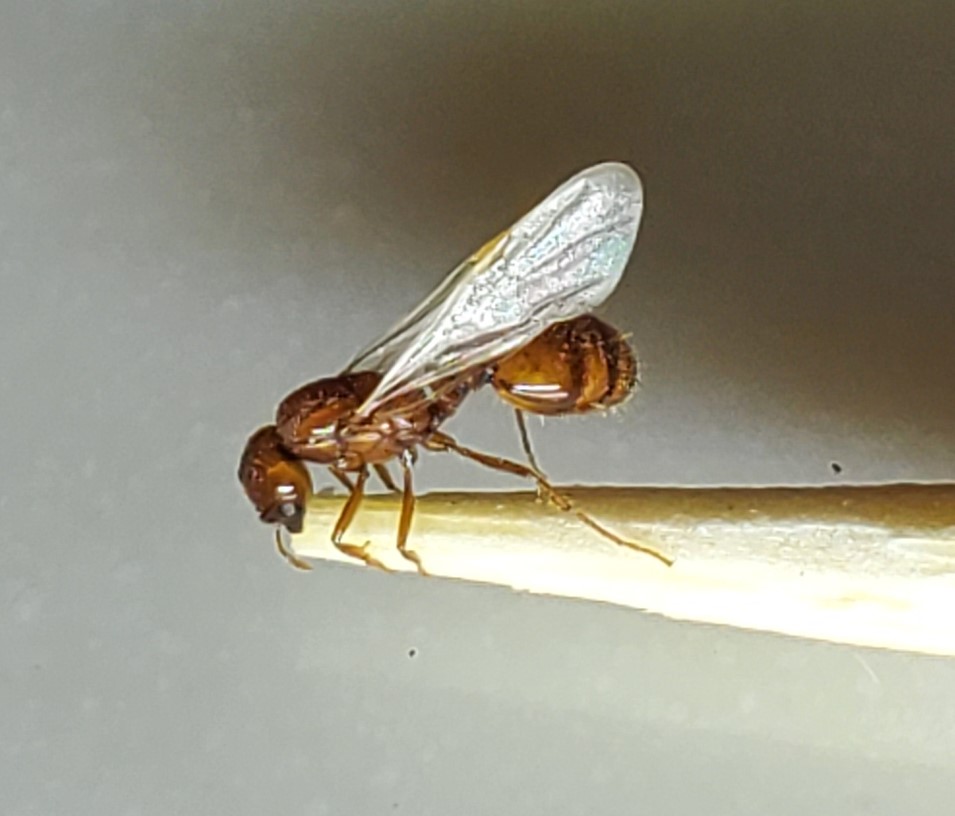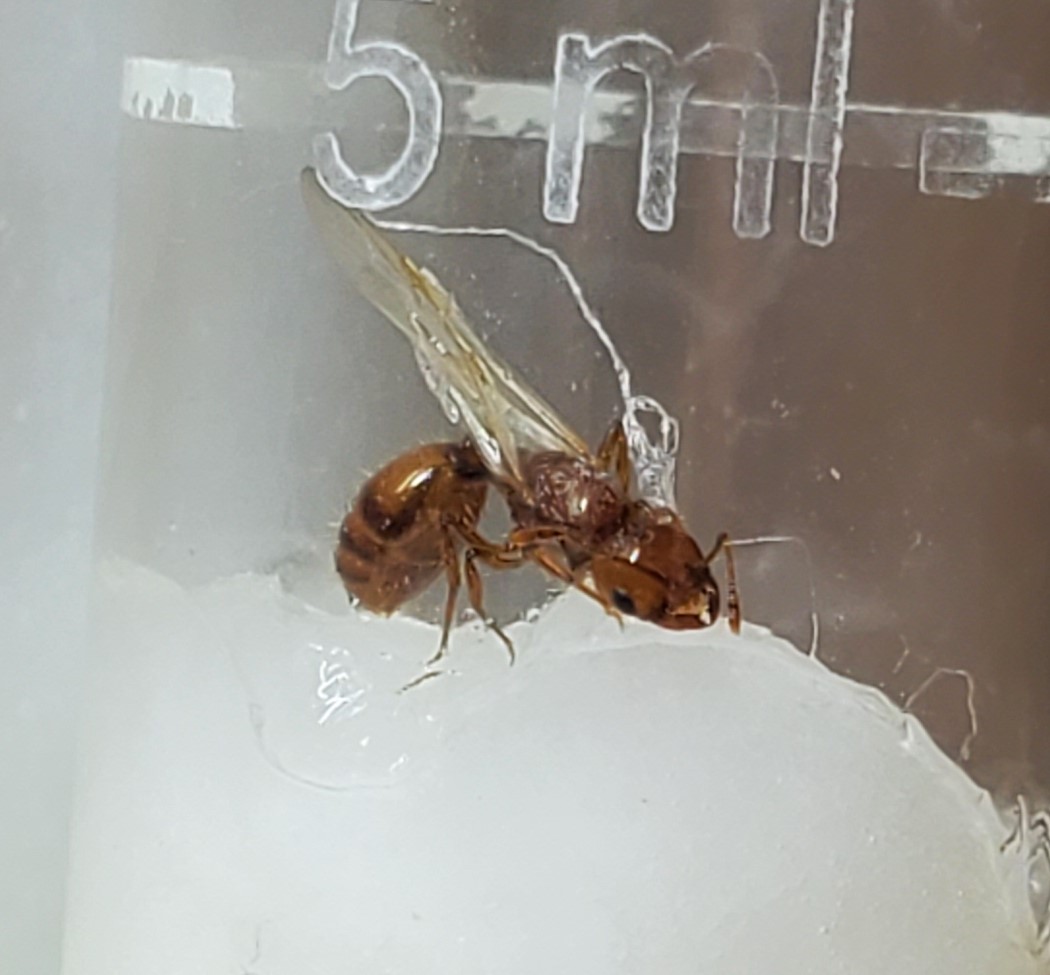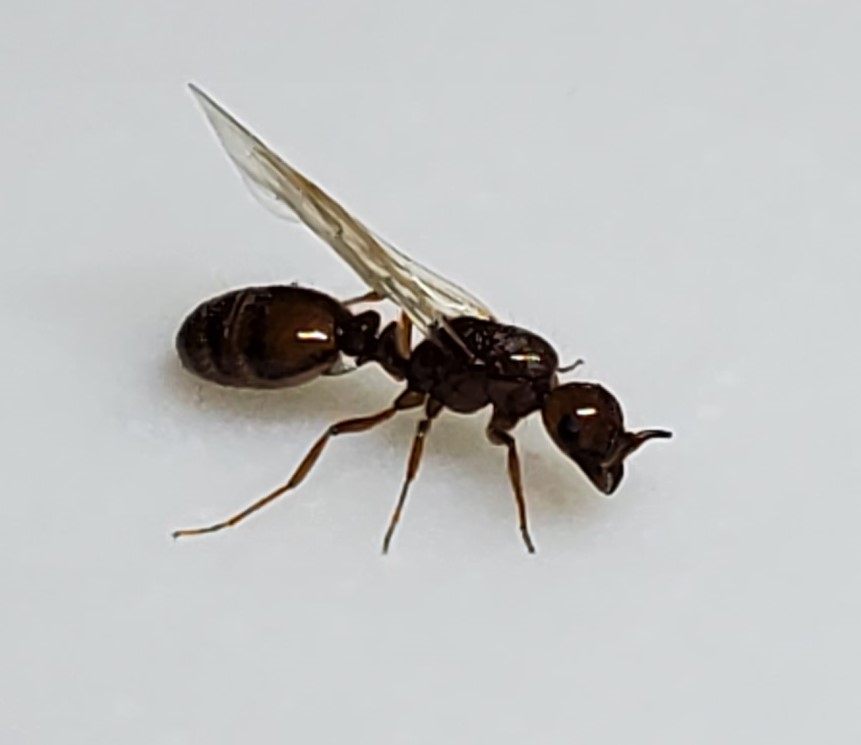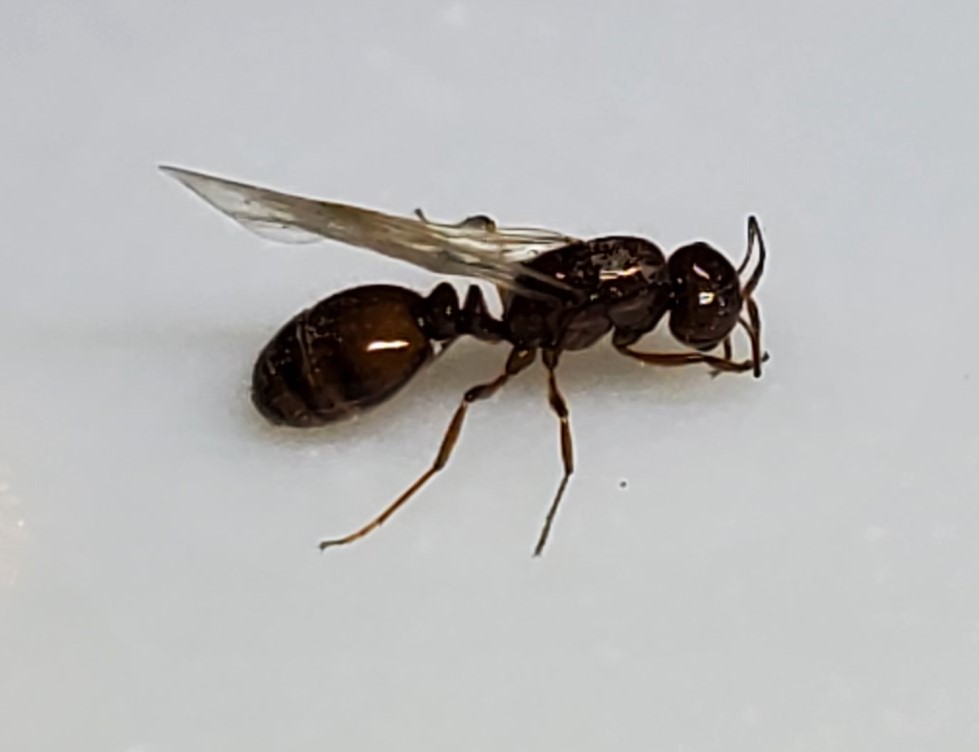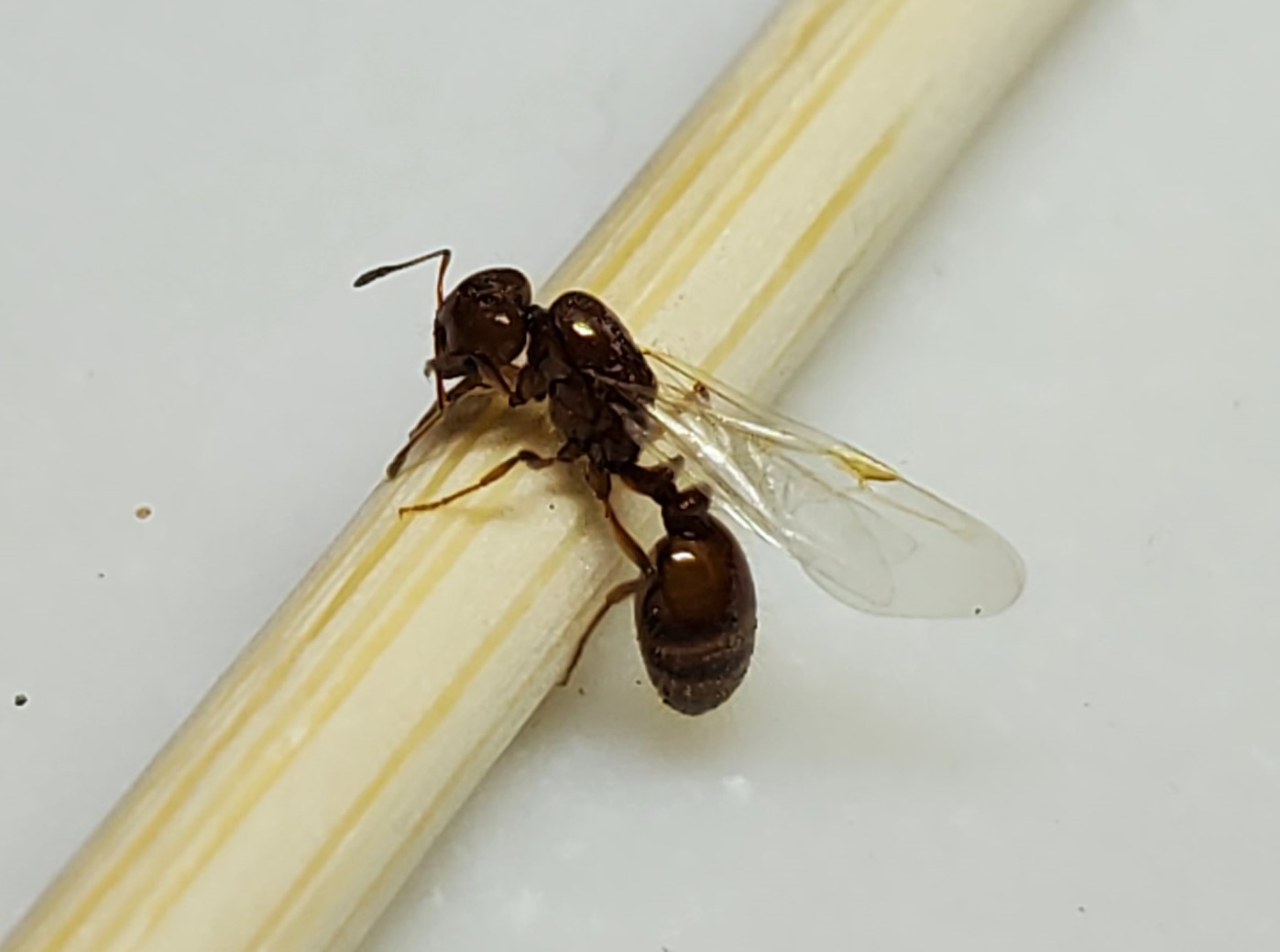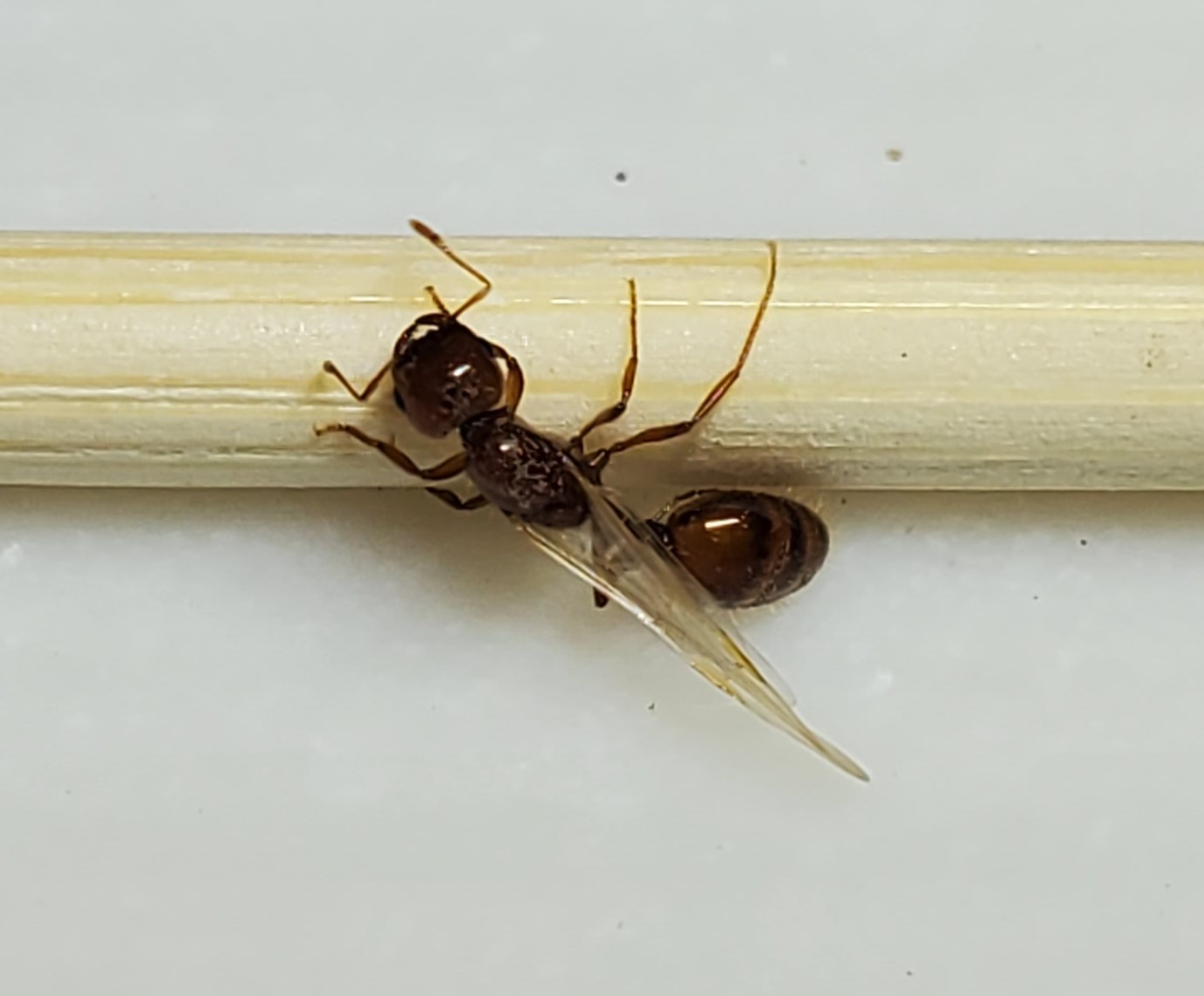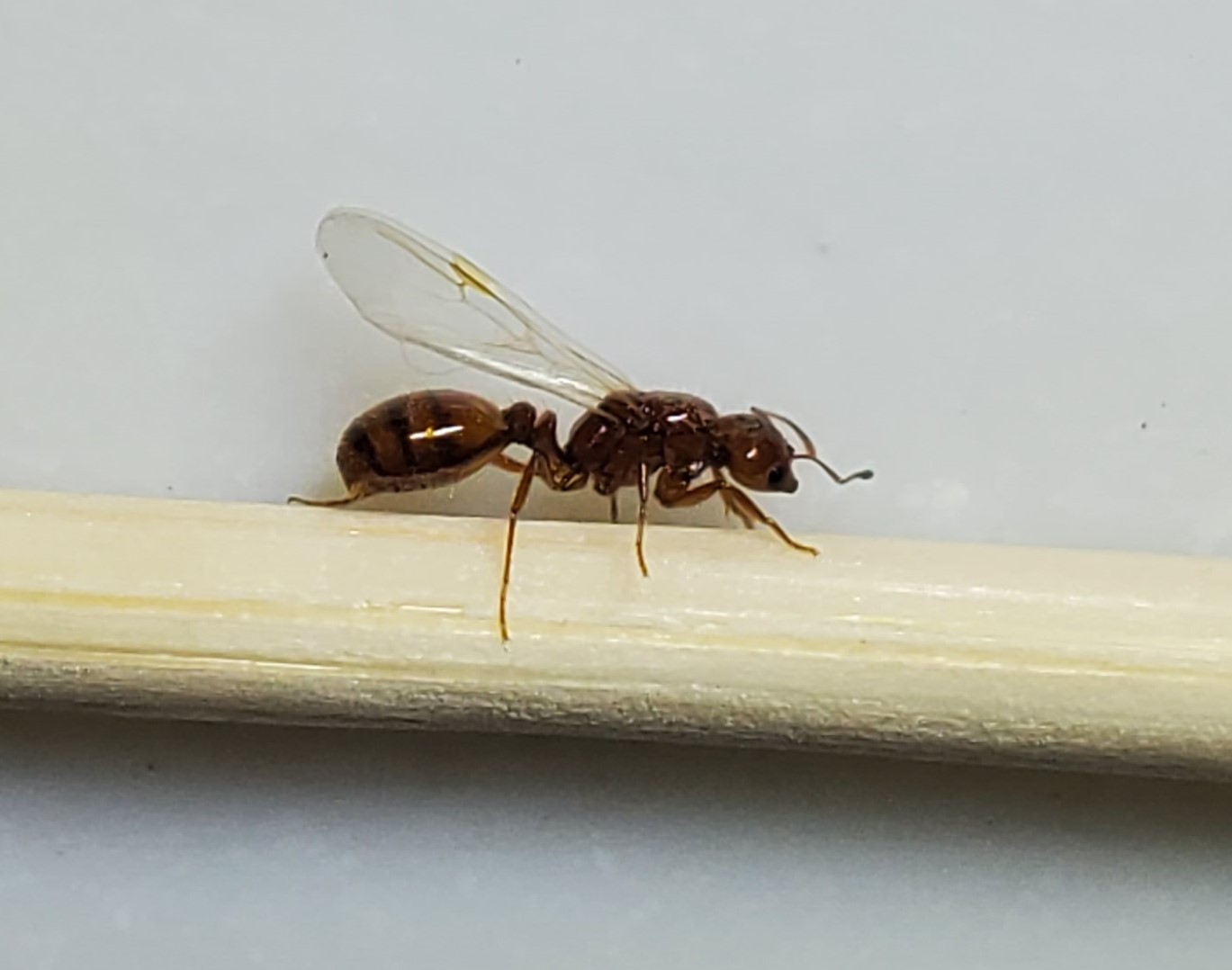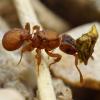I caught this queen running around on a trail about 9:00pm. I’m hoping that she is fertile even though she has not shed her wings yet. I think it would be fun to have a queen that kept her wings.
Thank you for your help IDing! I need to know if she is fully claustral or not.
1. Location
- Phoenix Arizona (Town of Gilbert)
2. Date of collection
- June 11th 2020 about 9:00pm
3. Habitat of collection:
- Typical Arizona Desert
4. Length (from head to gaster):
- I would guess about 5 – 7 mm
5. Color, hue, pattern and texture:
- Light brown color with black markings on gaster (please see pics)
6. Distinguishing characteristics:
- Still has wings after 1 day of captivity
9. Nuptial flight time and date:
- June 11th 2020




